Opinion & Analysis
The Facts About Single Length Irons
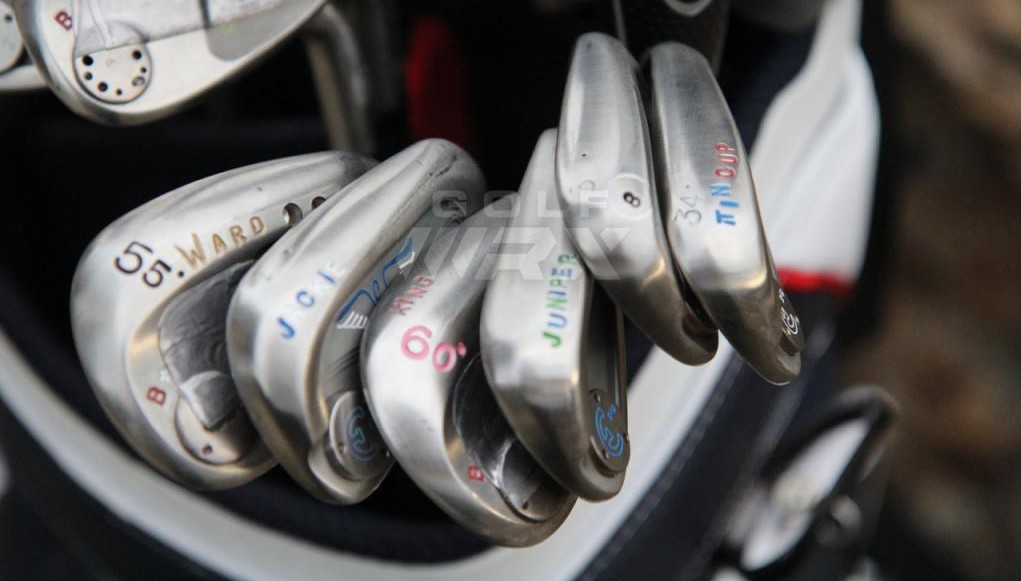
There has been a LOT of discussion lately about single-length iron sets. So much, in fact, that as a club builder and fitter single-length irons have become a daily topic of conversation.
Most of this buzz about single-length irons has been created by reigning U.S Amateur and NCAA Division I Individual champion Bryson DeChambeau, who has been very successful using a custom set of single-length irons made by Edel, a boutique equipment company in Texas.
Related: Bryson DeChambeau WITB 2016
Edel isn’t the first company to build a set of single-length irons. Tommy Armour built and marketed a set called the EQL’s in the 80’s, and there have been a few other niche companies who have been building these sets for a long time, including One Iron Golf. Recently, Tom Wishon and Jaacob Bowden released a set of single-length irons. Named Sterling Irons, they’re designed to be built shorter than others. At 36.5 inches, they’re each about the length of an 8-iron.
Related: Learn more about Sterling Irons
All of the sets listed above have one thing in common; they were designed with the sole purpose of being built to a single length. With this trend gaining more interest from the general golfing public the most popular questions are:
- Can single length irons work for me?
- Can I make my current set into a single-length set?
I’m going to explain the differences between a standard set of irons and single-length irons, why it’s difficult to convert a standard set of irons to single length and what is needed to make sure proper gapping is achieved throughout the set.
According to DeChambeau and the team at Edel, his set took many attempts to get just right. And as a club builder who is getting requests for this type of set, it’s difficult to explain the small nuances involved to golfers, especially those players looking to do this to either an existing set or to a new one built from scratch using standard OEM components. It’s also difficult to fit a golfer for this type of set because of the cost associated with having enough club heads of varying lofts to properly fit for distance gapping.
The other piece of information that I don’t believe has been mentioned enough as it pertains to the average golfer is that DeChambeau is a finely tuned athlete who swings his 45-inch driver at more than 120 mph. Most club players can only swing that fast in their dreams, and DeChambeau’s speed gives him a distinct advantage with his irons.
If you give a golfer five clubs of the same length, shaft flex, total weight, and swing weight, they will swing them at almost exactly the same speed. Give that golfer a traditional set of irons that are built with shafts that get approximately 0.5-inches longer as the iron number decreases (with the same shaft, shaft flex, swing weight and a decreasing head weight of 7-to-10 grams per club), however, and they will likely swing each club 2-3 mph faster as they move up the set.
The increased clubhead speed translates into faster ball speeds in the longer irons, which is needed to maintain a consistent peak height from the lower-lofted clubs, also know as a consistent flight window. Smash Factor also slowly increases, because the reduced loft will transfer more energy into the ball (the contact is less “glancing” or oblique), creating faster ball speeds with the longer clubs.
Distance gapping can become an issue in the longer clubs with a single-length iron set, because swing speed does not stay the same as loft is reduced. That’s why DeChambeau’s custom Edel set uses bigger loft gaps (5 degrees) in the longer clubs. Wishon’s Sterling irons do not have this design, but he addressed the issue by making the faces of his long irons “hotter,” which has the same effect.
Here is where things become very difficult from a building perspective. Standard head weights for irons are not designed to be built to the same length. They are engineered for a company’s specific length progression, generally 0.5 inches between clubs.
The chart below demonstrates the difference in club head mass between standard head weights of a set built to roughly D3 and a set of single-length irons.
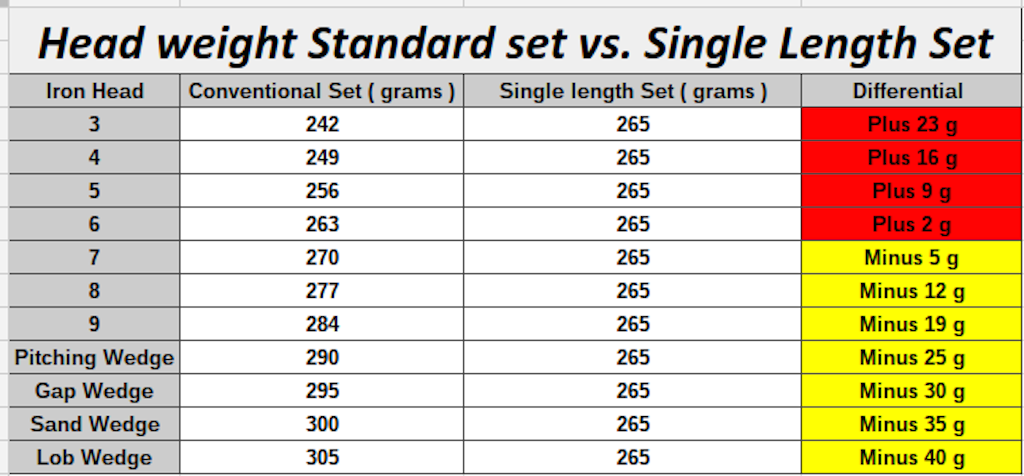 Also, the lies and loft of standard irons are not designed to be bent past a certain point, which can cause detriment to the playing characteristics of the club head.
Also, the lies and loft of standard irons are not designed to be bent past a certain point, which can cause detriment to the playing characteristics of the club head.
DeChambeau plays his entire set at 73-degree lie angle, which is more upright than the lie angle of most off-the-rack putters! Trying to bend a set of standard iron heads to these angles would either totally mar the hosels or cause them to break, especially considering many irons now are made of multiple materials and advanced constructions. DeChambeau’s Edel irons, on the other hand, are forged and more easily bent.
It should also be noted that DeChambeau’s irons are manufactured so there is no negative effect on performance. And his extremely upright lie angles are the result of his unique swing mechanics, and are not necessary to use a single-length iron set.
The chart below demonstrates standard lie angles vs. DeChambeau’s Clubs.
Going back to the issue of gapping, with a set of single-length clubs, lofts need to be adjusted accordingly to make sure that golfers have proper yardage gaps between clubs. With any player, the gapping will depending on swing speed.
The Trackman data below shows some interesting information based my testing a set of single-length irons (37.5 inches) and a set of irons built to standard lengths with frequency matched shafts, matching swing weights, and built in 0.5-inch increments.
The conclusion is that single-length irons might be the perfect solution to creating more consistency in your golf game, but just like buying a new driver or standard set of irons, be sure to visit a proper club fitter. It will take some time to find the right components to fit your needs.
- LIKE282
- LEGIT55
- WOW17
- LOL8
- IDHT10
- FLOP5
- OB5
- SHANK18
19th Hole
Vincenzi’s 2024 Zurich Classic of New Orleans betting preview

The PGA TOUR heads to New Orleans to play the 2023 Zurich Classic of New Orleans. In a welcome change from the usual stroke play, the Zurich Classic is a team event. On Thursday and Saturday, the teams play best ball, and on Friday and Sunday the teams play alternate shot.
TPC Louisiana is a par 72 that measures 7,425 yards. The course features some short par 4s and plenty of water and bunkers, which makes for a lot of exciting risk/reward scenarios for competitors. Pete Dye designed the course in 2004 specifically for the Zurich Classic, although the event didn’t make its debut until 2007 because of Hurricane Katrina.
Coming off of the Masters and a signature event in consecutive weeks, the field this week is a step down, and understandably so. Many of the world’s top players will be using this time to rest after a busy stretch.
However, there are some interesting teams this season with some stars making surprise appearances in the team event. Some notable teams include Patrick Cantlay and Xander Schauffele, Rory McIlroy and Shane Lowry, Collin Morikawa and Kurt Kitayama, Will Zalatoris and Sahith Theegala as well as a few Canadian teams, Nick Taylor and Adam Hadwin and Taylor Pendrith and Corey Conners.
Past Winners at TPC Louisiana
- 2023: Riley/Hardy (-30)
- 2022: Cantlay/Schauffele (-29)
- 2021: Leishman/Smith (-20)
- 2019: Palmer/Rahm (-26)
- 2018: Horschel/Piercy (-22)
- 2017: Blixt/Smith (-27)
2024 Zurich Classic of New Orleans Picks
Tom Hoge/Maverick McNealy +2500 (DraftKings)
Tom Hoge is coming off of a solid T18 finish at the RBC Heritage and finished T13 at last year’s Zurich Classic alongside Harris English.
This season, Hoge is having one of his best years on Tour in terms of Strokes Gained: Approach. In his last 24 rounds, the only player to top him on the category is Scottie Scheffler. Hoge has been solid on Pete Dye designs, ranking 28th in the field over his past 36 rounds.
McNealy is also having a solid season. He’s finished T6 at the Waste Management Phoenix Open and T9 at the PLAYERS Championship. He recently started working with world renowned swing coach, Butch Harmon, and its seemingly paid dividends in 2024.
Keith Mitchell/Joel Dahmen +4000 (DraftKings)
Keith Mitchell is having a fantastic season, finishing in the top-20 of five of his past seven starts on Tour. Most recently, Mitchell finished T14 at the Valero Texas Open and gained a whopping 6.0 strokes off the tee. He finished 6th at last year’s Zurich Classic.
Joel Dahmen is having a resurgent year and has been dialed in with his irons. He also has a T11 finish at the PLAYERS Championship at TPC Sawgrass which is another Pete Dye track. With Mitchell’s length and Dahmen’s ability to put it close with his short irons, the Mitchell/Dahmen combination will be dangerous this week.
Taylor Moore/Matt NeSmith +6500 (DraftKings)
Taylor Moore has quickly developed into one of the more consistent players on Tour. He’s finished in the top-20 in three of his past four starts, including a very impressive showing at The Masters, finishing T20. He’s also finished T4 at this event in consecutive seasons alongside Matt NeSmith.
NeSmith isn’t having a great 2024, but has seemed to elevate his game in this format. He finished T26 at Pete Dye’s TPC Sawgrass, which gives the 30-year-old something to build off of. NeSmith is also a great putter on Bermudagrass, which could help elevate Moore’s ball striking prowess.
- LIKE7
- LEGIT3
- WOW1
- LOL1
- IDHT0
- FLOP3
- OB1
- SHANK1
19th Hole
Vincenzi’s 2024 LIV Adelaide betting preview: Cam Smith ready for big week down under

After having four of the top twelve players on the leaderboard at The Masters, LIV Golf is set for their fifth event of the season: LIV Adelaide.
For both LIV fans and golf fans in Australia, LIV Adelaide is one of the most anticipated events of the year. With 35,000 people expected to attend each day of the tournament, the Grange Golf Club will be crawling with fans who are passionate about the sport of golf. The 12th hole, better known as “the watering hole”, is sure to have the rowdiest of the fans cheering after a long day of drinking some Leishman Lager.
The Grange Golf Club is a par-72 that measures 6,946 yards. The course features minimal resistance, as golfers went extremely low last season. In 2023, Talor Gooch shot consecutive rounds of 62 on Thursday and Friday, giving himself a gigantic cushion heading into championship Sunday. Things got tight for a while, but in the end, the Oklahoma State product was able to hold off The Crushers’ Anirban Lahiri for a three-shot victory.
The Four Aces won the team competition with the Range Goats finishing second.
*All Images Courtesy of LIV Golf*
Past Winners at LIV Adelaide
- 2023: Talor Gooch (-19)
Stat Leaders Through LIV Miami
Green in Regulation
- Richard Bland
- Jon Rahm
- Paul Casey
Fairways Hit
- Abraham Ancer
- Graeme McDowell
- Henrik Stenson
Driving Distance
- Bryson DeChambeau
- Joaquin Niemann
- Dean Burmester
Putting
- Cameron Smith
- Louis Oosthuizen
- Matt Jones
2024 LIV Adelaide Picks
Cameron Smith +1400 (DraftKings)
When I pulled up the odds for LIV Adelaide, I was more than a little surprised to see multiple golfers listed ahead of Cameron Smith on the betting board. A few starts ago, Cam finished runner-up at LIV Hong Kong, which is a golf course that absolutely suits his eye. Augusta National in another course that Smith could roll out of bed and finish in the top-ten at, and he did so two weeks ago at The Masters, finishing T6.
At Augusta, he gained strokes on the field on approach, off the tee (slightly), and of course, around the green and putting. Smith able to get in the mix at a major championship despite coming into the week feeling under the weather tells me that his game is once again rounding into form.
The Grange Golf Club is another course that undoubtedly suits the Australian. Smith is obviously incredibly comfortable playing in front of the Aussie faithful and has won three Australian PGA Championship’s. The course is very short and will allow Smith to play conservative off the tee, mitigating his most glaring weakness. With birdies available all over the golf course, there’s a chance the event turns into a putting contest, and there’s no one on the planet I’d rather have in one of those than Cam Smith.

Louis Oosthuizen +2200 (DraftKings)
Louis Oosthuizen has simply been one of the best players on LIV in the 2024 seas0n. The South African has finished in the top-10 on the LIV leaderboard in three of his five starts, with his best coming in Jeddah, where he finished T2. Perhaps more impressively, Oosthuizen finished T7 at LIV Miami, which took place at Doral’s “Blue Monster”, an absolutely massive golf course. Given that Louis is on the shorter side in terms of distance off the tee, his ability to play well in Miami shows how dialed he is with the irons this season.
In addition to the LIV finishes, Oosthuizen won back-to-back starts on the DP World Tour in December at the Alfred Dunhill Championship and the Mauritus Open. He also finished runner-up at the end of February in the International Series Oman. The 41-year-old has been one of the most consistent performers of 2024, regardless of tour.
For the season, Louis ranks 4th on LIV in birdies made, T9 in fairways hit and first in putting. He ranks 32nd in driving distance, but that won’t be an issue at this short course. Last season, he finished T11 at the event, but was in decent position going into the final round but fell back after shooting 70 while the rest of the field went low. This season, Oosthuizen comes into the event in peak form, and the course should be a perfect fit for his smooth swing and hot putter this week.

- LIKE12
- LEGIT3
- WOW1
- LOL1
- IDHT0
- FLOP1
- OB1
- SHANK1
Opinion & Analysis
The Wedge Guy: What really makes a wedge work? Part 1

Of all the clubs in our bags, wedges are almost always the simplest in construction and, therefore, the easiest to analyze what might make one work differently from another if you know what to look for.
Wedges are a lot less mysterious than drivers, of course, as the major brands are working with a lot of “pixie dust” inside these modern marvels. That’s carrying over more to irons now, with so many new models featuring internal multi-material technologies, and almost all of them having a “badge” or insert in the back to allow more complex graphics while hiding the actual distribution of mass.
But when it comes to wedges, most on the market today are still single pieces of molded steel, either cast or forged into that shape. So, if you look closely at where the mass is distributed, it’s pretty clear how that wedge is going to perform.
To start, because of their wider soles, the majority of the mass of almost any wedge is along the bottom third of the clubhead. So, the best wedge shots are always those hit between the 2nd and 5th grooves so that more mass is directly behind that impact. Elite tour professionals practice incessantly to learn to do that consistently, wearing out a spot about the size of a penny right there. If impact moves higher than that, the face is dramatically thinner, so smash factor is compromised significantly, which reduces the overall distance the ball will fly.
Every one of us, tour players included, knows that maddening shot that we feel a bit high on the face and it doesn’t go anywhere, it’s not your fault.
If your wedges show a wear pattern the size of a silver dollar, and centered above the 3rd or 4th groove, you are not getting anywhere near the same performance from shot to shot. Robot testing proves impact even two to three grooves higher in the face can cause distance loss of up to 35 to 55 feet with modern ‘tour design’ wedges.
In addition, as impact moves above the center of mass, the golf club principle of gear effect causes the ball to fly higher with less spin. Think of modern drivers for a minute. The “holy grail” of driving is high launch and low spin, and the driver engineers are pulling out all stops to get the mass as low in the clubhead as possible to optimize this combination.
Where is all the mass in your wedges? Low. So, disregarding the higher lofts, wedges “want” to launch the ball high with low spin – exactly the opposite of what good wedge play requires penetrating ball flight with high spin.
While almost all major brand wedges have begun putting a tiny bit more thickness in the top portion of the clubhead, conventional and modern ‘tour design’ wedges perform pretty much like they always have. Elite players learn to hit those crisp, spinny penetrating wedge shots by spending lots of practice time learning to consistently make contact low in the face.
So, what about grooves and face texture?
Grooves on any club can only do so much, and no one has any material advantage here. The USGA tightly defines what we manufacturers can do with grooves and face texture, and modern manufacturing techniques allow all of us to push those limits ever closer. And we all do. End of story.
Then there’s the topic of bounce and grinds, the most complex and confusing part of the wedge formula. Many top brands offer a complex array of sole configurations, all of them admittedly specialized to a particular kind of lie or turf conditions, and/or a particular divot pattern.
But if you don’t play the same turf all the time, and make the same size divot on every swing, how would you ever figure this out?
The only way is to take any wedge you are considering and play it a few rounds, hitting all the shots you face and observing the results. There’s simply no other way.
So, hopefully this will inspire a lively conversation in our comments section, and I’ll chime in to answer any questions you might have.
And next week, I’ll dive into the rest of the wedge formula. Yes, shafts, grips and specifications are essential, too.
- LIKE32
- LEGIT7
- WOW1
- LOL1
- IDHT2
- FLOP3
- OB1
- SHANK3
-

 19th Hole2 weeks ago
19th Hole2 weeks agoDave Portnoy places monstrous outright bet for the 2024 Masters
-

 19th Hole2 weeks ago
19th Hole2 weeks agoTiger Woods arrives at 2024 Masters equipped with a putter that may surprise you
-

 19th Hole2 days ago
19th Hole2 days agoJustin Thomas on the equipment choice of Scottie Scheffler that he thinks is ‘weird’
-

 19th Hole2 days ago
19th Hole2 days ago‘Absolutely crazy’ – Major champ lays into Patrick Cantlay over his decision on final hole of RBC Heritage
-

 19th Hole3 weeks ago
19th Hole3 weeks agoReport: Tiger Woods has ‘eliminated sex’ in preparation for the 2024 Masters
-

 19th Hole1 week ago
19th Hole1 week agoTwo star names reportedly blanked Jon Rahm all week at the Masters
-

 19th Hole1 week ago
19th Hole1 week agoReport: LIV Golf identifies latest star name they hope to sign to breakaway tour
-

 19th Hole1 week ago
19th Hole1 week agoNeal Shipley presser ends in awkward fashion after reporter claims Tiger handed him note on 8th fairway


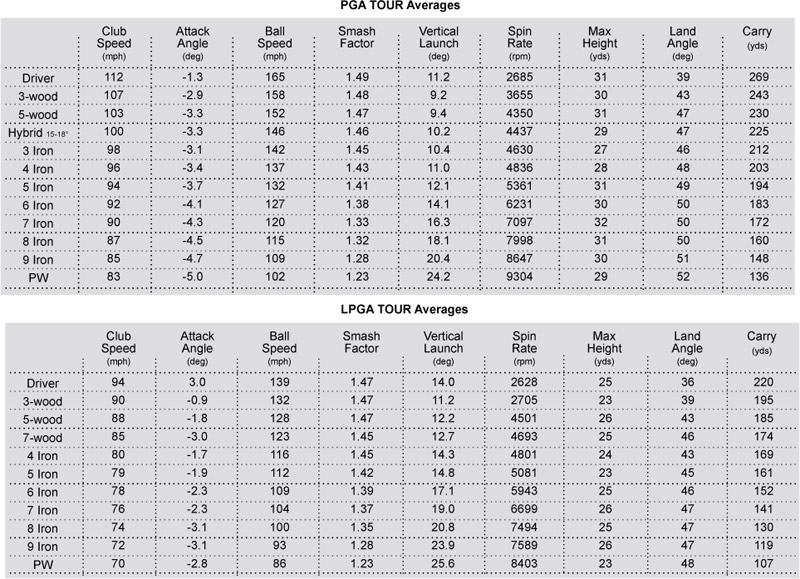
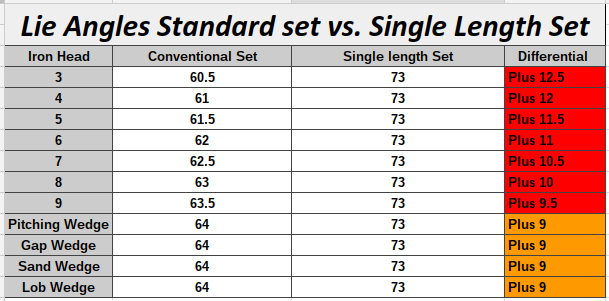
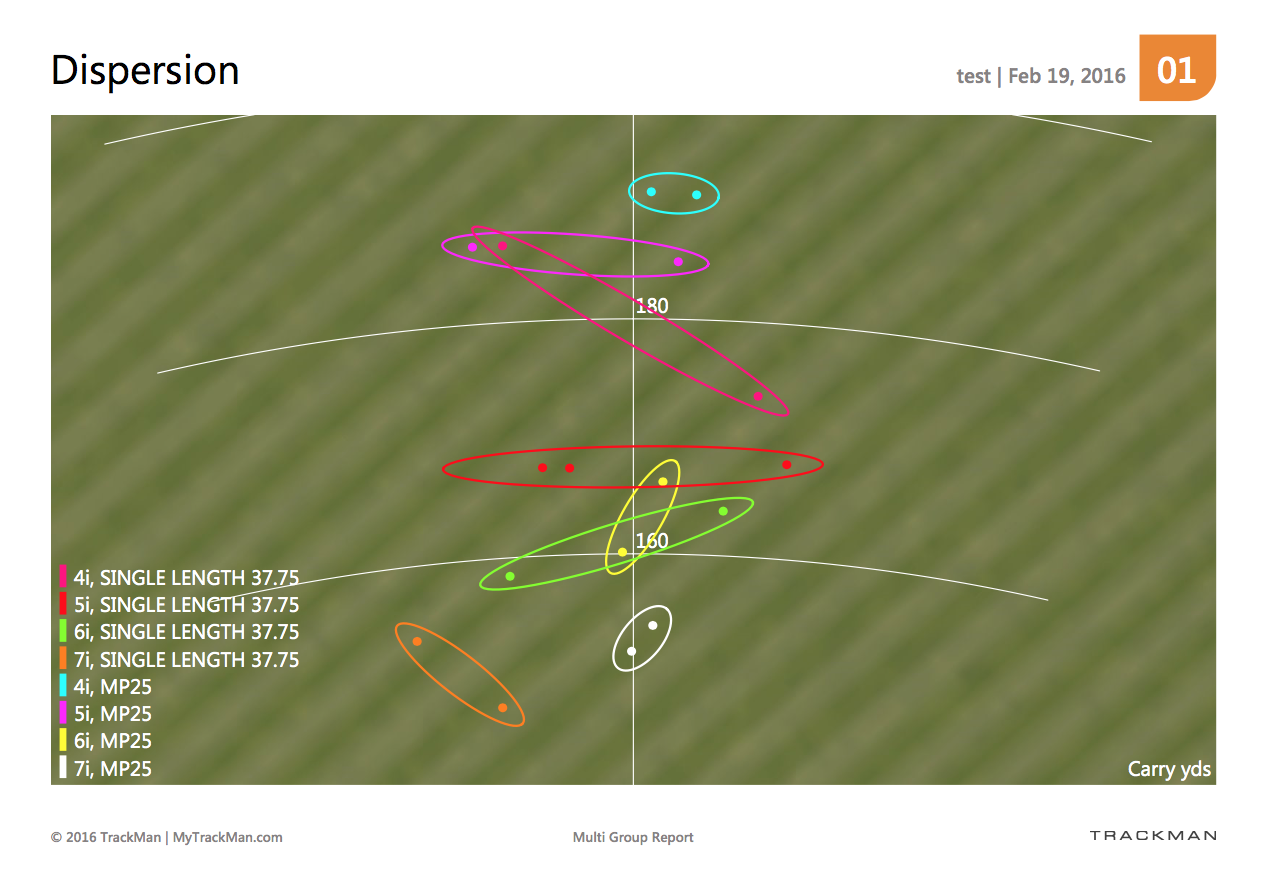



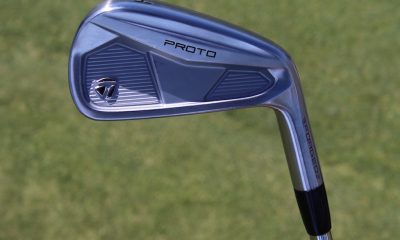

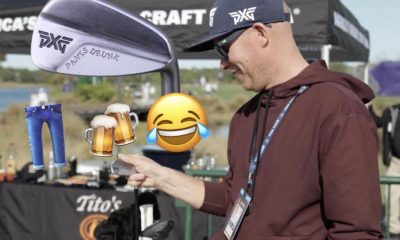

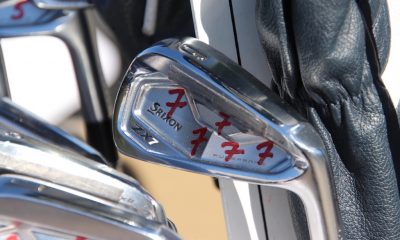





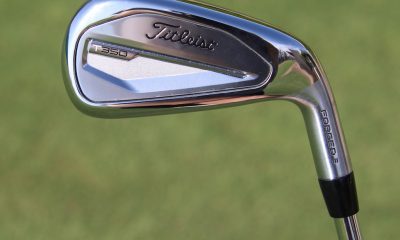













Bruce Gerhold
Mar 18, 2016 at 1:58 pm
I used conventional club heads and fabricated a set of MOI matched clubs using a 2 length concept. This could be an alternate set that a player would find useful: I have played these for several months no plans to return to variable length, variable weight clubs.
I hold advanced degrees in Mechanical Engineering where I studied the science and mathematics of moving bodies. My career was in R&D work so tinkering with club fabrication is a natural. I’ll outline my fabrication below.
The clubheads are a cavity back design with and undercut behind the face ( Hireko Prophet CB cast perimeter with a forged, hardened stainless face Note the lofts are 1 club number lower than conventional to artificially add length but I refer to conventional loft club numbers below. http://www.hirekogolf.com/golf-components/clubheads/golf-irons/dynacraft-prophet-cb-iron-clubhead.html ). I selected these based on excellent feel of the forged face inserts and the undercut offers a convenient place to add weight that is well supported mechanically and will remain on the club head. The 2, 3, 4, 5 irons are same length, same shaft, same shaft trim (5 iron), same grip. I used two techniques to add weight to the club heads so they all equaled the 5 iron ( 263 g) : first, I mixed tungsten powder and shafting epoxy forming a self leveling mix, then put the mix in the cavity allowing it to settle to the bottom of the undercut and distribute evenly. When greater than 10 grams is required, I used 1/4 oz “egg” shaped lead fishing sinkers that were flattened to fit into the undercut – one in the toe and one in the heel. I then used the tungsten powder + epoxy to trim the weight and pot in the lead pieces. Both methods function well with no weight lost while playing and practicing. The long irons are 37 inches long.
The 6, 7, 8, 9 are made similarly with weight equal to the 8 iron ( 284 g ), shaft trim of an 8 iron and no weight on the 9 iron (simply made it 3/8 shorter for constant total club MOI). The short irons are 36 inches long. Since the short irons are shorter, but with increased head weight, the club MOI equals that of the long irons as measured with a pendulum technique. Note: the MOI is the moment of inertial of the entire club about the point between the hands (pivot point for club release which is what generates speed). The concept of swingweight is not supported by science and I (and many others) take as meaningless.
I find that even though I have 2 club lengths, the ball position is roughly the same for the 2 lengths with the longer clubs played one ball forward of the short clubs.. The common set up tremendously simplifies your game and leads to solid iron play. I flattened lie angle somewhat on the 5,4 and 8,9 but hesitated to bend too much because they are a cast body (2 degree max bending recommended). My 2 length clubs play just fine with minimal lie adjustments because the 2 lengths effectively give a lie adjustment.
My results show NO SHOT DISTANCE PROBLEMS. The length of a shot depends on club loft, club momentum (speed times MASS), and hitting the sweet spot. The added club head mass compensates for the shorter shaft, and I hit much more solid shots due to a controllable club length. 9 iron 120 and 2 iron 195 with normal type spacing for the intermediate clubs.
Lawrence Savage
Mar 18, 2016 at 1:01 pm
I bought a set of 1 Iron clubs because I thought it sounded like a really good idea. These were the problems I experienced:
1. The look on some clubs (3i, 4i and particularly wedges) was a bit off putting
2. I hit shorter shots in general, even though the lofts were nearly identical to my previous set. This was an absolute confidence killer. My swing speed is very middle of the road and I found that 3i and 4i were barely longer than 5i
3. I found the shafts in the wedges a little bit whippy, which may have contributed to reduced distance
4. The larger grips took a bit of getting used to, and I went from hitting a relatively predictable draw to an semi-controlled fade
5. Chipping was much harder from Kikuyu grass because of the low bounce of 3° (except SW at 6°) – certainly it was awkward-feeling chipping with a 7i-length LW at first
6. The grooves absolutely mashed the golf balls covers. In fact if one were super particular it would be one shot one ball, so much was the scuffing. This was a real sore point since the ZAR:USD exchange rate has made decent balls very expensive now
7. I went out six shots on handicap over five months – this was the death knell for me
I eventually went back to my old set and after a year I recovered my old form, in fact I reached my lowest hcp. It was a really expensive experiment, but super glad I tried it. Maybe when I’m older I would consider them again.
Ash
Mar 18, 2016 at 12:52 pm
The article ‘borrows’ heavily from members comments in the forums. A key point left out is that Bryson D, with Edel Golf, have adjusted heads so that the weights are IDENTICAL. Missing that vital point renders this article worthless.
Gisle Solhaug
Mar 17, 2016 at 10:25 am
The advantage of single length sets of irons is that your muscle memory will only have to learn one swing for your set of irons rather than one swing for each club. The same can be achieved on a standard set of golf clubs by optimizing the weight of each club by adding a specific weight to the grip end of the club. As the ball position and club length differ on a traditional set, so must the weight of each club. The calculations to obtain this exact weight is complex and involves building a computer model of your body swinging each of your clubs. You will then have the same swing for every club in your bag, except the putter of course. By making every club the same length, the ball position will be the same for every club at setup. Therefore, the clubs will be perfectly matched when they all have the same weight and MOI. And they will all have the same Swingweight, for those of you that care about that. The disadvantage of a single length set of irons is that you still need to apply a different swing for all the other clubs in the bag. What if you could have the same swing for all the clubs? That would make the game a lot easier. Those who are interested can learn more at http://www.rational-golf.com
Large chris
Mar 18, 2016 at 1:47 pm
Not according to the book ‘physics of golf’ by Jorgenson as referred to by Dave Tutelman.
Perfectly balancing a conventional 1/2 inch progression set of irons requires specific weights added both at the butt and midway down the shaft. It can’t be done by just adding different weights at the butt only, as it is not possible to equalise the first, second and third moments of the club without adding weights at the midpoint.
Also you seem to be suggesting you can achieve the same swing with different length clubs…. Patently impossible as the lie angle is changing ie the angle your wrists are pointing at to ground out the club.
KK
Mar 16, 2016 at 7:56 pm
Very interesting but I do agree this this probably for the higher swing speed golfer. Maybe two lengths for slower swing speeds? That would be a nightmare for fitters, lol.
Tony Wright
Mar 16, 2016 at 6:59 pm
Thanks for the informative article Ryan. You mentioned Tom Wishon’s single length iron design. I know that he worked for 2 years to develop it, in partnership with a very good European player. It will be very interesting to see what happens with his design once it gets into the hands of golfers through custom club fitters. I know that he has already sold out 4 orders of single length iron heads through his supplier – the first shipment of heads from Tom to custom fitters will happen sometime later in March, and the 4th set of orders will not occur until sometime in June. None of this says that single length is going to catch on – and Tom himself says it will not be for everyone – but we will see!
Snowman9000
Mar 16, 2016 at 1:25 pm
Regarding your dispersion graphic: At least one of those club numbers should have been effectively the same in both sets. Maybe the 5 iron, maybe the 6. Yet every SL club was worse. Are you comparing an ill-fitted SL set to a well-fitted conventional set?
BTW I don’t disagree with your assessment of the obstacles involved. I have custom made 3 SL sets. Even going so far as to remove or add weight in the right places as to improve the flighting of the irons. My last set was my best, and it’s pretty good. But I still find that the “short” irons (9 & wedges) fly too high. I feel it’s because the attack is shallower. My irons are only 6 iron through wedges, so the rest of the objections don’t really come into play. I can see a 5 iron, but I can’t see any reason today for a recreational golfer to play a 4 iron, no matter the length. So for 5 or 6 irons through wedges, it’s not that hard to do, and there are definite benefits in consistency, once the right fitting is found.
With an SL set, you don’t have to fret about whether to match the clubs via swingweight, or MOI, or MBI, or balance point, etc. Which is good, because some golfers do better with descending swingweights, some with steady swingweights, some with ascending weight shafts, some with constant weight shafts, some with unitized (descending weight) shafts, etc. But the amount of testing, and of required discernment ability by the fitter and golfer, and randomness of swings during fitting, make it extremely unlikely that the golfer comes out of the fitting with the true right heft and balance for him, throughout the set. MAYBE for the test club, yes. Hopefully so.
In the SL set, all that goes out the window. If the test club is truly a good fit, so are the others.
Again, I admit that this has to be balanced against the downsides, which are distance gapping and flighting. Many golfers, if they played an SL set that truly matched their swing, might find better results even despite the gapping and flighting issues. Might.
Jason
Mar 16, 2016 at 12:55 pm
Golfers are funny. Every top 100 player in the world uses a standard set of clubs and some guy shows up out of nowhere (albeit BC is a great golfer and he obviously has had tremendous success) with a single length set and now everyone is considering changing years of familiarity for them. The lifelong equipment search for golfers continues…
Robert A Parolisi
Mar 15, 2016 at 7:37 pm
Add tape to build up the taper in the shaft, then grip down on the iron.
Al
Mar 15, 2016 at 3:18 pm
I’ve tried to do this with 2011 Tmag tour preferred MC (they have exchangeable weights and ebay allowed for a variety of options), I went with a lighter shaft Nippon 950gh HT. Basically, I had the 8-LW the same length. The 3,5 and 7 same length, didn’t use the 4 and 6 for gapping purposes. Had the 3 bent to 20, the 5i to 25 and 7i to 30. I added a heavier weight plate to the back as well as brass shaft tip weights. I was able to get them to C9-D2. Overall it was fine, I actually had some solid rounds and scored well too. Mentally I struggled looking down at the 3 and how short it was. I played the 8-LW at a length of 35.5″ and 3-7″ at 36.5″. Unfortunately I reverted back to normal lengths. I regret it now and wish I would have stayed with it longer. I have another set of shafts I can play with if I get the itch.
Scooter McGavin
Mar 15, 2016 at 12:56 pm
Sounds like something you’d need to go to a specialty shop for, because I doubt the local Golfsmith or Golf Galaxy would have the equipment or know-how to accommodate.
Bob
Mar 15, 2016 at 11:23 am
I’ve known Ryan for many years and he knows the mechanical aspects of club building as well as anyone I’ve met in my 37 years in and around the golf business. He an excellent synopsis of the positive and negative aspects of the single length approach, IF in the hands of an athletic player like Dechambeau.
TOM
Mar 15, 2016 at 10:49 am
the last paragraph sums it all up.
Ryan
Mar 15, 2016 at 10:46 am
I’m not quite ready to switch to a single length set of irons, but what do you think about a single length for wedges? It’s something I’ve been considering for awhile.
devilsadvocate
Mar 15, 2016 at 2:54 pm
Single length wedges are the norm on tour… Highly recommend not only single length wedges but single swing weight , total weight, and lie angle throughout your wedges… Only difference would be loft (obviously) and bounce… Then when you practice short game you develop a consistent bottom of the arc with your wedges… Kind of important haha
Aaron
Mar 15, 2016 at 3:33 pm
I have played my wedges (46,50, 55, 60) at the same length (off the pw) for years. The consistency is definitely easier to have when they all setup the same. It will feel only a tad odd at first on your lob wedge when you are gripping it normal and you will gain some extra yardage in that club as well, but I have found it to be easier to control them because the setup and feel is the same throughout. I don’t know that I would go to a single length set though… The idea of increasing length shafts allows you to have an increased swing speed as you go towards the long irons without the addition of actually swinging harder. The other thing that comes into play is “working the ball”. The flatter lie angle on the lower lofted clubs makes it easier to create draws and fades. I tend to change my swing quite a bit to suit the shot shape I am attempting and I don’t play the robotic swing style like Bryson. If you are someone who views golf in straight shots and the same swing as much as possible in a round I think the single length set could be advantageous.